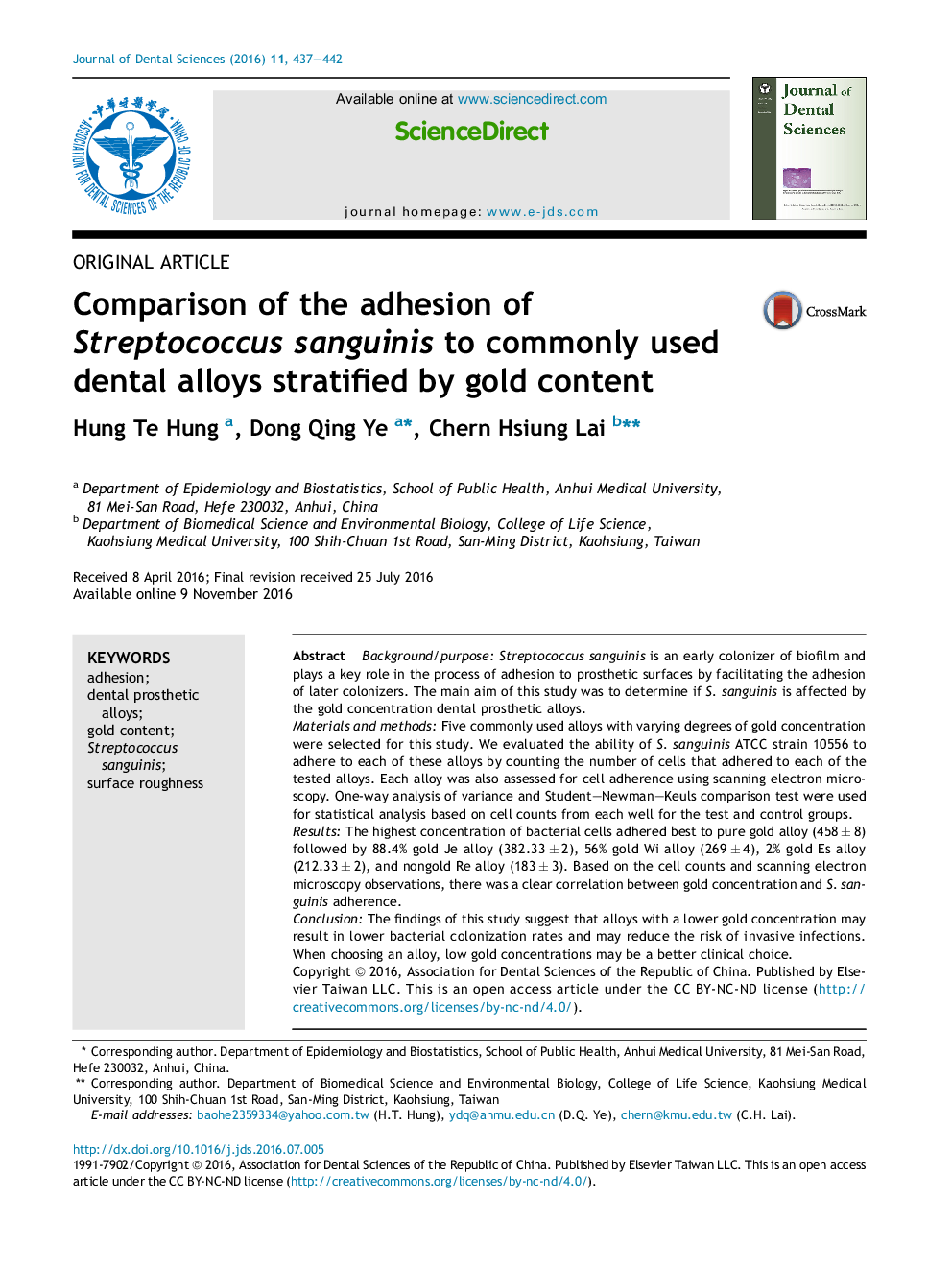| Article ID | Journal | Published Year | Pages | File Type |
|---|---|---|---|---|
| 5640465 | Journal of Dental Sciences | 2016 | 6 Pages |
Background/purposeStreptococcus sanguinis is an early colonizer of biofilm and plays a key role in the process of adhesion to prosthetic surfaces by facilitating the adhesion of later colonizers. The main aim of this study was to determine if S. sanguinis is affected by the gold concentration dental prosthetic alloys.Materials and methodsFive commonly used alloys with varying degrees of gold concentration were selected for this study. We evaluated the ability of S. sanguinis ATCC strain 10556 to adhere to each of these alloys by counting the number of cells that adhered to each of the tested alloys. Each alloy was also assessed for cell adherence using scanning electron microscopy. One-way analysis of variance and Student-Newman-Keuls comparison test were used for statistical analysis based on cell counts from each well for the test and control groups.ResultsThe highest concentration of bacterial cells adhered best to pure gold alloy (458 ± 8) followed by 88.4% gold Je alloy (382.33 ± 2), 56% gold Wi alloy (269 ± 4), 2% gold Es alloy (212.33 ± 2), and nongold Re alloy (183 ± 3). Based on the cell counts and scanning electron microscopy observations, there was a clear correlation between gold concentration and S. sanguinis adherence.ConclusionThe findings of this study suggest that alloys with a lower gold concentration may result in lower bacterial colonization rates and may reduce the risk of invasive infections. When choosing an alloy, low gold concentrations may be a better clinical choice.
